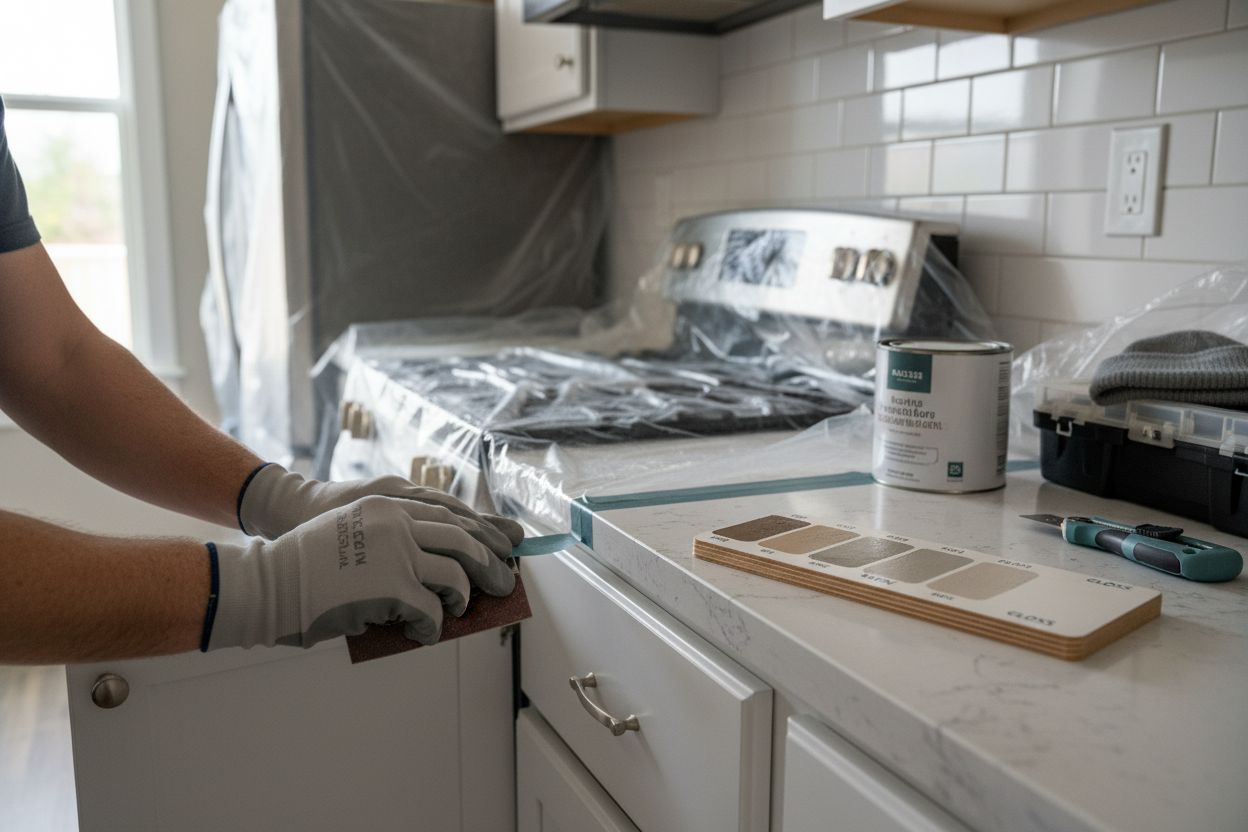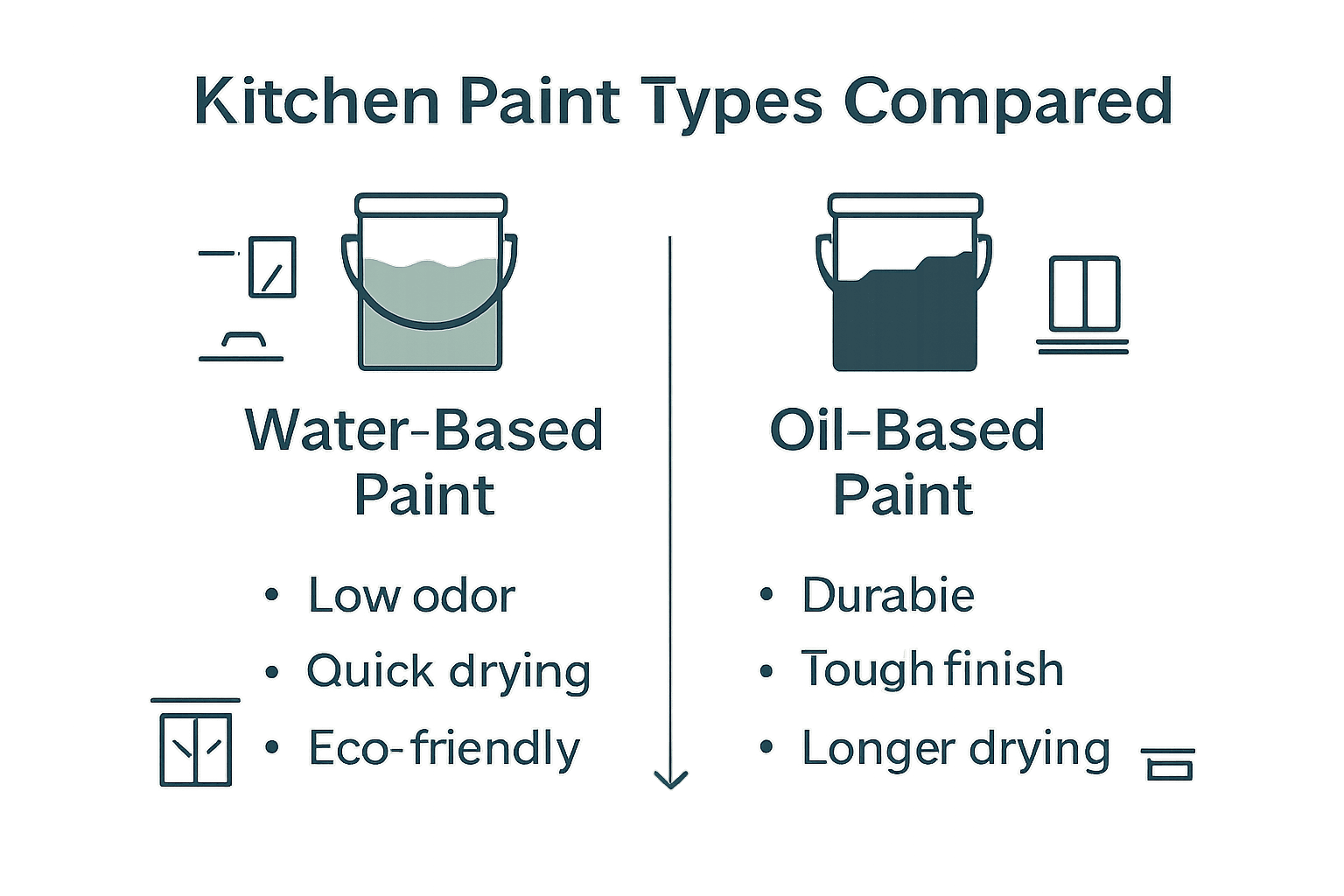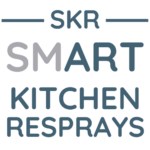The Essential Guide to Paint in Kitchen Renovation
Did you know that fresh paint can increase a home’s appeal by up to 20 percent during renovations? The right paint choices in a kitchen go far beyond simple decoration. They shape mood, support cleaning efforts, and influence how spacious or welcoming a kitchen feels. Whether you want durability for busy family spaces or a finish that can handle daily messes, informed paint selection makes a powerful difference in your kitchen’s transformation.
Key Takeaways
| Point | Details |
|---|---|
| Strategic Paint Selection | Choose paints that balance aesthetics with durability and functionality to enhance your kitchen design. |
| Finish Matters | Different finishes serve unique purposes; opt for matt for imperfections and gloss for easy cleaning. |
| Cost-Effective Respraying | Kitchen respray services are an economical option to refresh spaces without complete renovations, minimizing waste. |
| Importance of Preparation | Proper surface preparation is critical to avoid common DIY mistakes that compromise the finish quality and longevity. |
Table of Contents
- Role Of Paint In Modern Kitchen Renovation
- Types Of Paints Best Suited For Kitchens
- How Kitchen Respray Services Work
- Key Benefits And Limitations Of Paint Solutions
- Cost Considerations And Long-Term Value
- Common Mistakes In Kitchen Painting Projects
Role of Paint in Modern Kitchen Renovation
Paint is far more than just a decorative afterthought in kitchen renovation – it’s a strategic design element that transforms spaces. According to research from expert home design sources, the colour and finish of paint significantly impact a kitchen’s overall aesthetic and atmosphere.
Modern kitchens demand smart paint choices that balance visual appeal with practical functionality. As research indicates, water-based emulsions offer remarkable advantages like low odour and quick drying times. Different finishes serve unique purposes: matt finishes help conceal surface imperfections, while gloss and satin finishes support easier cleaning – crucial in high-traffic kitchen environments.
Choosing paint isn’t just about colour selection. It’s about creating an environment that reflects personal style while maintaining durability. Consider these key paint selection strategies:
- Select finishes that complement your cabinetry
- Opt for paints that enhance natural light
- Choose durability over pure aesthetics

- Match paint type to your kitchen’s specific usage
For homeowners looking to dive deeper into kitchen painting techniques, our guide on kitchen spray coating provides comprehensive insights into modern renovation approaches.
Types of Paints Best Suited for Kitchens
Kitchen paint selection goes far beyond simple colour choices. According to research from home building experts, the type of paint you choose dramatically impacts your kitchen’s functionality, durability, and overall aesthetic. Water-based paints have become increasingly popular in modern kitchens due to their eco-friendly properties and practical advantages.
Different finishes serve unique purposes in kitchen environments. As research indicates, eggshell finishes offer a subtle sheen with better durability than matte paints, while satin finishes provide superior moisture resistance. Semi-gloss and gloss finishes excel for trim and cabinets, though they can potentially highlight surface imperfections – so careful application is key.
When considering paint types, homeowners should understand the fundamental differences:
-
Water-based paints
- Quick drying times
- Low odour
- Environmentally friendly
- Ideal for walls and ceilings
-
Oil-based paints
- Tough, hard finish
- Excellent for cabinets and trim
- Longer drying times
- Stronger odour
For those seeking professional insights into kitchen painting techniques, our comprehensive guide on in-situ kitchen paints offers expert recommendations tailored to specific kitchen renovation needs.

Here’s a comparison of the main kitchen paint types:
| Paint Type | Key Advantages | Typical Uses | Notable Drawbacks |
|---|---|---|---|
| Water-based | Low odour Quick drying Eco-friendly |
Walls Ceilings |
Less durable on woodwork |
| Oil-based | Hard finish Excellent durability |
Cabinets Trim |
Long drying Strong fumes |
| Eggshell | Subtle sheen Good durability |
Walls Ceilings |
Less moisture resistance |
| Satin | Moisture resistant Easy clean |
High-traffic walls Woodwork |
May highlight imperfections |
| Semi-gloss Gloss |
Highly durable Easy to clean |
Cabinets Doors Trim |
Can show surface flaws |
How Kitchen Respray Services Work
Kitchen respray services represent a smart, cost-effective alternative to complete kitchen replacements. According to kitchen renovation experts, the respray process involves a meticulous approach that transforms existing kitchen surfaces without the need for total reconstruction.
The typical respray service follows a comprehensive workflow. Removal and preparation are critical first steps, where specialists carefully remove cabinet doors, drawer fronts, and trim. This stage involves thorough inspection and repair of any damaged components, ensuring a flawless final finish. Professionals then apply lead-free acid catalyst cellulose paint, which offers remarkable versatility in colour and finish options – from matt to silk surfaces.
Key stages of a professional kitchen respray include:
-
Detailed surface assessment
-
Careful component removal
-
Repair and restoration of existing structures
-
Precision paint application
-
Finishing and quality checks
Ecological benefits make kitchen respraying particularly attractive. Compared to full kitchen replacements, this method significantly reduces waste, minimises environmental impact, and provides a fresh, updated look at a fraction of the cost and disruption. For homeowners interested in understanding more about professional kitchen transformation techniques, our comprehensive services overview provides in-depth insights into modern renovation approaches.
Key Benefits and Limitations of Paint Solutions
Understanding paint solutions requires a nuanced approach to selecting the right product for your kitchen environment. According to home building experts, different paint types come with distinct advantages and trade-offs that can significantly impact your renovation outcomes.
Water-based paints emerge as a popular choice for modern kitchens, offering remarkable convenience and performance. These paints provide low odour, quick drying times, and easier cleanup – perfect for high-traffic kitchen areas. In contrast, oil-based paints deliver superior durability and stain resistance but come with drawbacks like stronger fumes, longer drying periods, and a tendency to yellow over time.
Key considerations for kitchen paint solutions include:
- Durability factors
- Cleaning ease
- Colour retention
- Environmental impact
- Cost-effectiveness
Interesting colour trends also play a crucial role. As research from home design sources suggests, warm neutral tones like taupe and cashmere offer timeless aesthetics. However, homeowners should be mindful that trendy finishes might require careful lighting considerations, especially in compact spaces. For those seeking deeper insights into selecting the perfect kitchen paint, our expert spray paint comparison guide provides comprehensive recommendations tailored to various kitchen styles and requirements.
Cost Considerations and Long-Term Value
Kitchen renovation investments require careful financial planning, with paint solutions offering a strategic approach to balancing aesthetics and budget. Respraying emerges as a cost-effective alternative to complete kitchen replacements, providing significant savings while delivering a transformative visual impact.
The long-term value of paint solutions extends beyond immediate visual appeal. Homeowners can expect substantial financial benefits by choosing smart painting strategies. Professional respray services typically cost a fraction of full kitchen renovations, with the added advantage of minimal disruption to daily life. This approach not only preserves existing kitchen structures but also reduces material waste and associated environmental costs.
Key financial considerations for kitchen painting include:
- Initial investment compared to full renovation
- Durability of different paint types
- Maintenance and cleaning costs
- Potential property value increase
- Longevity of the paint finish
While upfront costs are important, savvy homeowners look beyond the initial price tag. Quality paint applications can protect surfaces, prevent degradation, and extend the life of kitchen components. For those seeking detailed financial insights into kitchen transformation, our comprehensive services overview offers expert guidance on maximizing your renovation budget and achieving optimal long-term value.
Common Mistakes in Kitchen Painting Projects
Kitchen painting projects can quickly turn from exciting renovations to frustrating experiences when critical preparation steps are overlooked. According to architectural design experts, numerous DIY painting mistakes can compromise the quality and longevity of your kitchen’s new finish.
Preparing surfaces is perhaps the most crucial yet frequently neglected stage of any painting project. Surface preparation involves more than simply grabbing a paintbrush and starting to paint. Many homeowners make fundamental errors like failing to wash walls thoroughly, skipping primer application, or attempting to apply subsequent coats before the initial layer has completely dried. These seemingly minor oversights can dramatically undermine paint adhesion and overall finish quality.
Key mistakes to avoid in kitchen painting include:
- Skipping wall cleaning and degreasing
- Neglecting proper primer application
- Applying paint coats too quickly
- Ignoring existing stains or surface imperfections
- Using incorrect paint type for kitchen environments
- Overlooking ventilation and drying requirements
Professional painters understand that successful kitchen painting is about precision and patience. Each step matters, from initial surface preparation to final coat application. For homeowners seeking expert guidance on avoiding common pitfalls, our comprehensive kitchen touch-ups guide provides invaluable insights into achieving a flawless finish that stands the test of time.
Discover the Smart Way to Transform Your Kitchen with Professional Respraying
Are you struggling with choosing the right paint finish or worried about the challenges of a full kitchen renovation? The difficulties discussed in this guide—like achieving a stunning look with durable results, ensuring easy cleaning, and avoiding common DIY pitfalls—are exactly what homeowners face when updating their kitchens. If you want expert results with none of the hassle, it is time to consider a specialised approach. Learn more in our helpful articles that cover kitchen painting problems and solutions.

Let our team at SKR Specialists handle your kitchen transformation with in-situ respray services tailored for real homes. We use the techniques explained in the Essential Guide to ensure seamless application, long-lasting protection, and a flawless finish. Why settle for less when you can trust professionals who understand the key factors in achieving both style and practicality? Take control of your renovation now by exploring our services on our main site and experience the difference for your own kitchen.
Frequently Asked Questions
What types of paint are best suited for kitchen renovations?
Water-based paints are highly recommended for kitchen walls and ceilings due to their quick drying time and low odour. For cabinets and trim, oil-based paints provide a tough, durable finish, while finishes like eggshell and satin offer moisture resistance and ease of cleaning.
How do paint finishes affect the kitchen’s aesthetic and functionality?
Different finishes serve unique purposes: matte finishes help conceal imperfections, while gloss and satin finishes facilitate easier cleaning. Selecting the right finish based on usage can enhance both the visual appeal and practicality of the kitchen space.
What common mistakes should be avoided in kitchen painting projects?
Common mistakes include skipping surface cleaning and degreasing, neglecting primer application, applying paint too quickly, and using the incorrect paint type. Proper preparation is crucial to ensuring a durable and quality finish.
How can I ensure the longevity of my kitchen paint finish?
To maximize the longevity of your kitchen paint finish, choose durable paint types, maintain cleanliness, and ensure proper ventilation during the painting process. Additionally, regular maintenance and cleaning can help extend the life of the finish.
